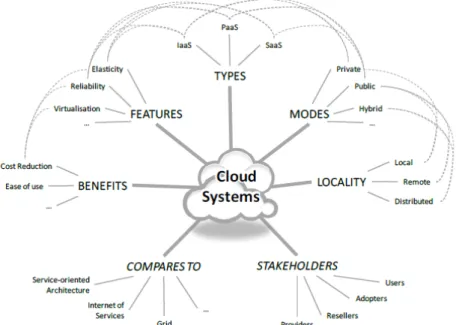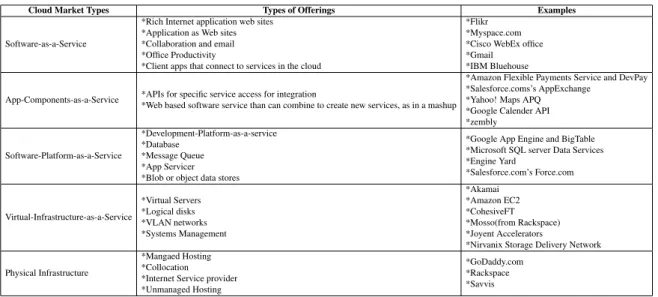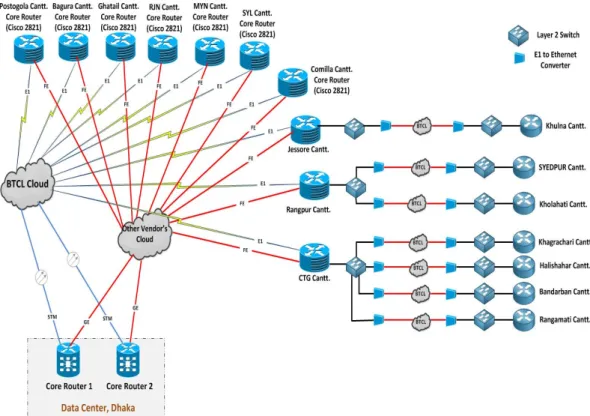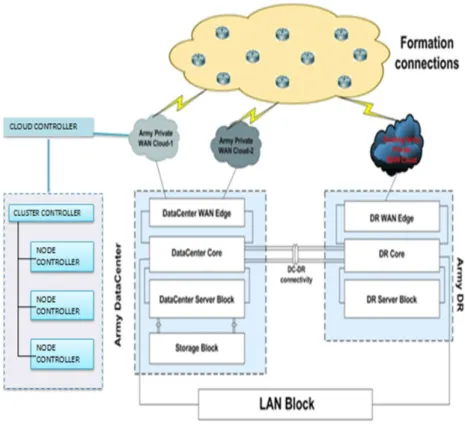This thesis entitled "Cloud Computing Feasibility and Prospects for Implementation in the Bangladesh Army", submitted by the group mentioned below, has been accepted as satisfactory in partial fulfillment of the requirements for the degree of B.Sc. In this thesis work, we have mainly tried to focus on incorporating the concept of cloud computing in the Bangladesh Army with the help of its current network infrastructure and resources.
Literature Review
This paper aims to give an idea about the use of the army data center with cloud computing concept as a high available IT infrastructure service. The architecture will be designed and built in a modular manner to facilitate implementation and operation. The modular facilities will be standardized to facilitate deployment at multiple sites and even mobile sites to ensure the availability and survivability of Army IT and data storage facilities under all foreseeable conditions in both peacetime and wartime [5].
Scope of the Research
Thesis Organization
Cloud Computing is a computing platform that provides computing power to scientists when they are outgrowing the local computing capabilities of institutions [6]. Cloud Computing has moved the user from being connected to a single machine to the Internet; therefore, the user is freed from thinking about the physical location of the file. For example, the user is no longer concerned about a specific desktop or flash drive, but instead focuses on the availability of an Internet connection.
To be more specific, a cloud is a platform or infrastructure that enables the execution of code (services, applications, etc.) in a managed and elastic manner, while "managed" means automatically ensuring reliability according to predefined quality parameters become and . Use of commodity computers, distributed over an Internet, to perform parallel processing, distributed storage, indexing and mining of data.
Choosing a Cloud Provider
SaaS also makes it easy to use the same software on all our devices at the same time by accessing it in the cloud. One instance of the service runs in the cloud and multiple end users are served. There is no need for upfront investment in servers or software licenses on the customer side, while costs are lower for the provider as only one application needs to be hosted and maintained.
The customer has the freedom to build his own applications that run on the provider's infrastructure. The cloud provider has less control in an IaaS system than with a SaaS agreement.
Deployment Types
To meet the manageability and scalability requirements of applications, PaaS providers offer a predefined combination of OS and application servers, such as LAMP platform (Linux, Apache, MySql and PHP), limited J2EE, Ruby, etc. As we go down the list from number one to number three, the subscriber gains more control over what they can do within the cloud space. Servers, storage systems, network equipment, data center space, etc. are pooled and made available to handle workloads.
Companies can use cloud functionality from others, or offer their own services to users outside the company. Giving the user the actual ability to leverage the cloud functions for his/her own purposes also allows other companies to outsource their services to such cloud providers, reducing the cost and effort of building their own infrastructure.
Cloud Computing Benefits
- Scalability
- Reduced Cost
- Increased Storage
- Flexibility
Cloud Computing with Virtualization is reducing capital expenditures by increasing resource virtualization. Unexpected workload spikes are also managed effectively and efficiently, as the cloud can scale dynamically. In addition to cost reduction, Cloud can save time, energy consumption and effort in infrastructure construction.
In addition, cloud-based collaboration tools and applications have attracted scientists who want to share their information and emulate others. In addition, the use of cloud computing infrastructure with remote management capability creates communication, collaboration and resource sharing capabilities with other institutions.
Bangladesh Army Network Infrastructure : Present Status
Development of Data Center
Transformation Of Army WAN
It will provide a standard platform to host the various IT applications that are necessary for the Army to effectively perform its role. The project includes IT infrastructure for computing, storage, backup, recovery and networking of Army Data Center components and associated infrastructure / passive components such as raised floor, cooling system, fire control system, access control, environmental monitoring system, electrical system, water detection system etc. This project aims to build the Army Data Center as a high-availability IT infrastructure service.
The modular facilities will be standardized to facilitate deployment to multiple locations and even mobile sites to ensure the availability and survivability of Army IT and data storage facilities under all foreseeable conditions in both peacetime and wartime.
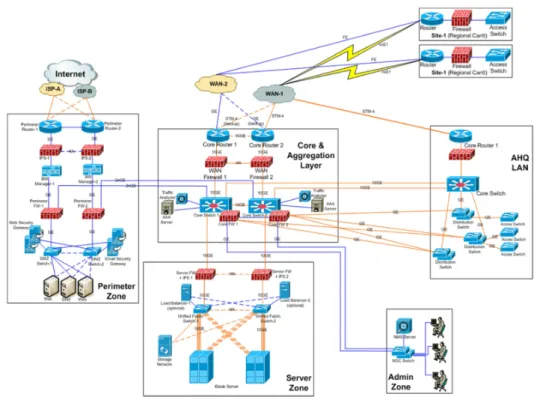
Motivation for Migrating to Cloud Computing
Using this modern technique, an additional layer on top of the existing system will allow commanders and their staffs at all levels to use unprecedented information dominance, virtual battlefield visualization and global communications capabilities. If we have some or all of our IT systems and applications in the cloud, we don't need to have as many or maybe even no servers on premises. The potential to reduce the running costs of the server room alone is huge, as less hardware also means less power and cooling.
Instead of the massive disruption this would have caused not to mention the need for IT staff to set up and manage the entire project, the process is automated with no disruption to the end user and no downtime. If much of the computing power and the storage capacity is in the cloud, there will be no need for ongoing maintenance, management and support of those resources in individual direction.
Integration of Cloud Computing Concept with Army WAN Infrastructure . 22
With cloud-based applications, it's much easier to keep software up-to-date than it would be with on-premises software. In many or most cases, customers (Bangladesh Army) will keep the main servers on premises, but the additional storage capacity can go to the cloud and the less equipment there is to maintain and operate, the less the burden is on him. the IT function and the business as a whole. Nowadays, most organizations have an existing IT infrastructure, usually based on licensed versions of private cloud solutions (as is the case with Corporate IT at the University of Copenhagen using VMware).
There are options for using Open Eucalyptus and Open Nebula which is based on options as open source based solutions with available options. For organizations such as the military that are just getting started with cloud computing, and its existing features available, it may be more appropriate to implement solutions using a private cloud provider [10].
Designing and Choosing a Solution
Just like in the military, data protection is very necessary and the cost of secure data is getting high day by day, so we have to go for private cloud computing. Firstly, it is Open Source Software (OSS), which was one of the requirements for the project. In academic and educational environments, OSS solutions are used mainly for interchangeability between different organizations (rather than being limited by using different proprietary software), and for socio-organizational reasons.
The embedded Eucalyptus cloud software is convenient as it is designed and fit to support private cloud solutions from a small starting point, and then scaling/de-escalation as needed. Additionally, our Army organization has an existing VMware-based virtualization infrastructure, a Eucalyptus-based solution can be seamlessly layered on top of an existing ES-X/ESXi environment by transforming the VMware-based hypervisor environment into a private on-premise environment similar to Amazon's AWS. cloud.
Major UEC/Eucalyptus Components
- Node Controller (NC)
- Cluster Controller (CC)
- Walrus Storage Controller (WS3)
- Storage Controller (SC)
- Cloud Controller (CLC)
NC runs on each UEC node and controls the instances in the node. The NC communicates with the operating system and hypervisor running on the node and the cluster controller. It collects information about the availability and utilization of physical resources on a node and information about the instances running on that node and reports the information to the cluster controller.
It is a persistent simple storage service (using S3 API compliant REST and SOAP APIs) that stores and serves files. Based on the information about the infrastructure load and resource availability, it determines the available resources and directs the load to the clusters.
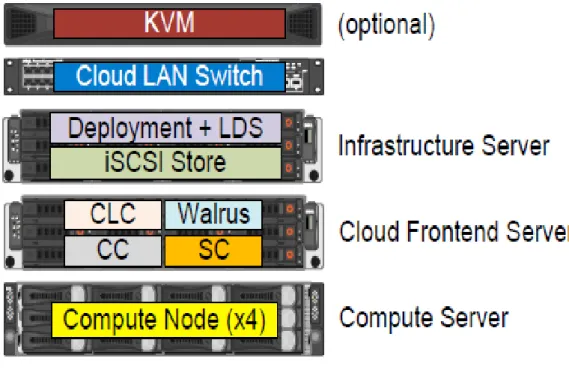
The Network
- Data Protection and Security
- Data Recovery, Availability and Destruction
- Management Capabilities
- Ownership and Access of Data
- Compliance and Migration Strategy
To implement the new concept of cloud computing in Bangladesh Army we may face many challenges or difficulties. The fundamental difference between implementing cloud computing in a corporate office and in the military is the security factor. So in the event of a natural disaster, if the main server is destroyed, data can be effectively recovered.
In case of enterprise cloud solution, the application, the hardware and the operating system will be owned by the cloud provider. Cloud subscription gives us access to the functionality of the application or feature we use.
Overcoming the Challenges
Using cloud computing services for data and applications that are subject to compliance regulations requires a high degree of transparency on the part of service providers. This is the most important task for cloud computing, because this will not only address the future efficiency of the application, but also the data security. For an army like ours, we can get the maximum benefit from cloud computing in terms of resource sharing and data optimization.
In previous sections, we have discussed some of the challenges we are likely to face in implementing cloud computing facilities in our military. The challenges of data recovery, availability and destruction can be overcome by trivial features of cloud computing.
Recommendations
We must also be aware of the security risks associated with storing data in the cloud. Therefore, we need a quality IT infrastructure to maintain the security of the connection on which the cloud will be connected. Therefore, it is very logical and time-consuming for BD Army to opt for cloud computing.
For implementing cloud, we need to know our options in terms of what type of cloud will be best for our needs. It is very important to choose which type of provider will be most useful to us, and what the reputation and responsibilities of the providers we are considering.
A simple illustration of Cloud Computing
Present Army WAN Network Infrastructure
A simple illustration of Army WAN
Major UEC/Eucalyptus components
Proposed Cloud Network infrastructure
